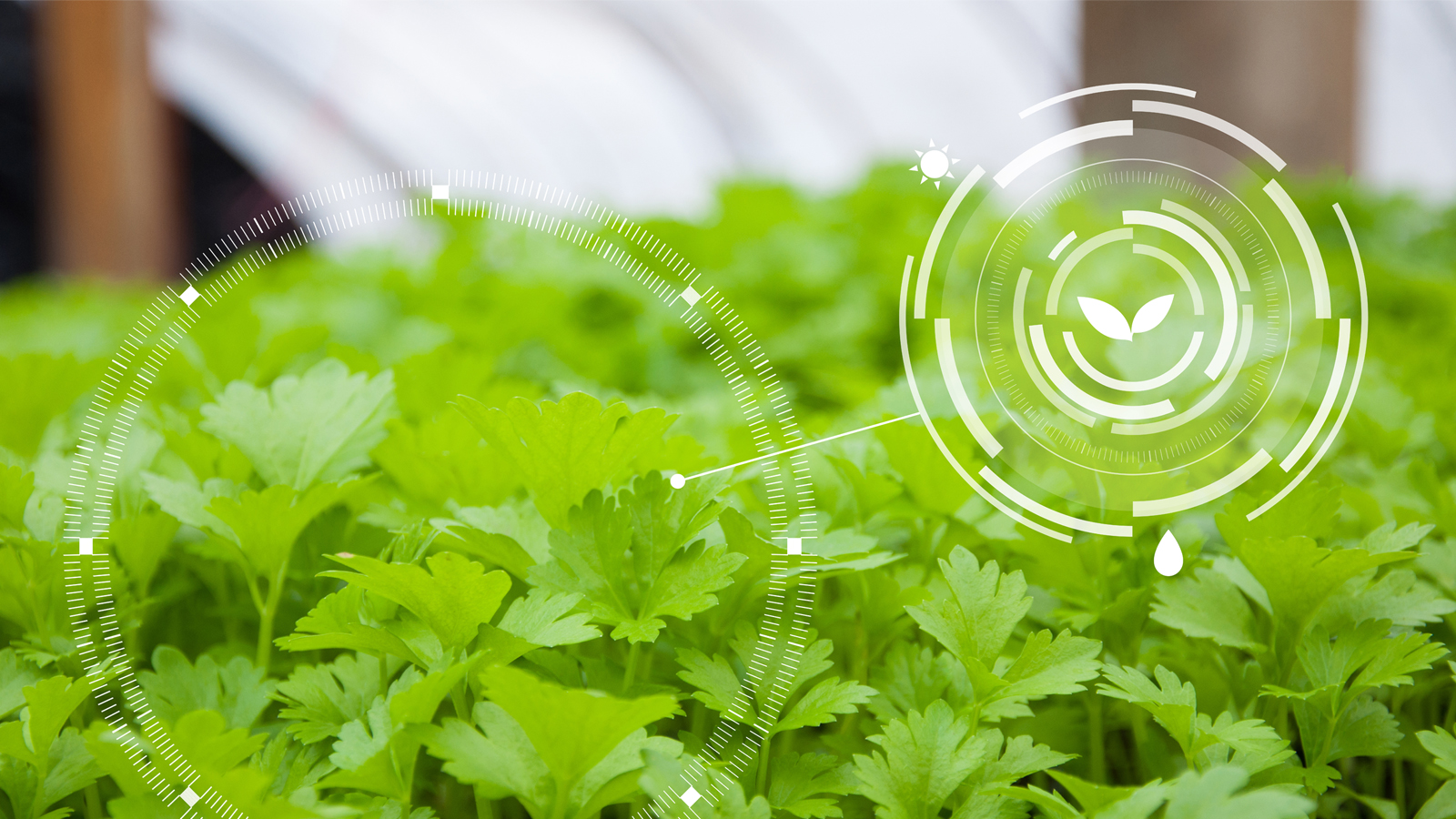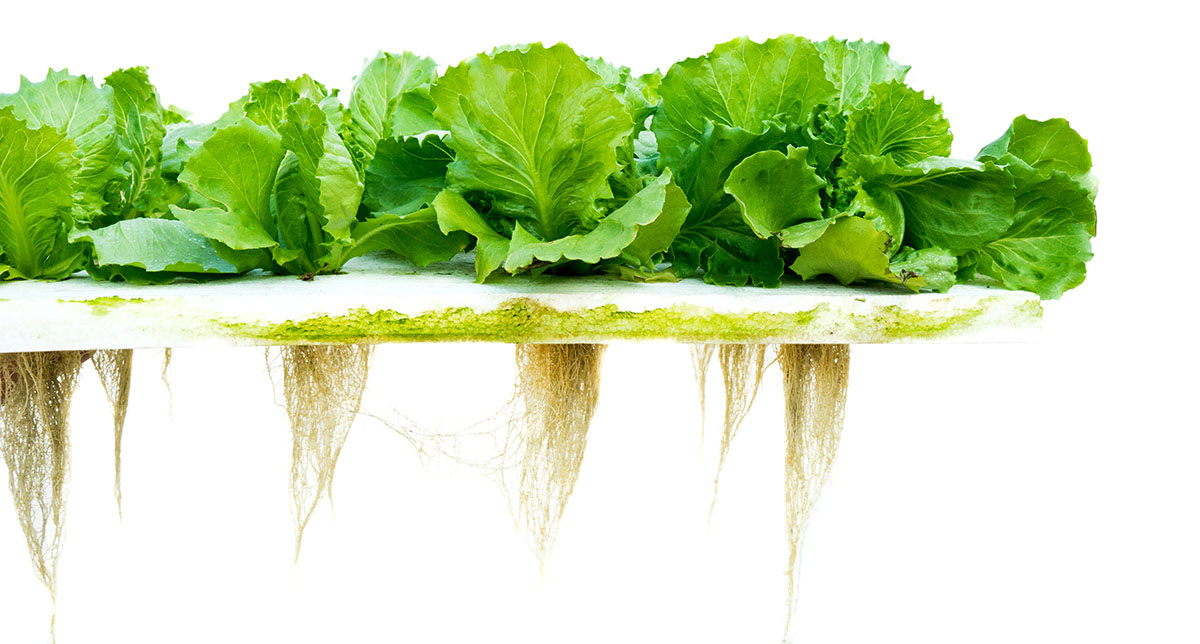Elementary | Sponsored By: Corteva Agriscience
How Does Your Garden Grow?

Is Lesson Plan Lesson Plans Life Science Elementary
Adapted from The Future of Farming by Bill Burton, Jessa Adler, Ana Casanova, Annie Jonas, and Lakeshia Peters
Science & Children | January 2015 | Vol 52, Issue 5
Objective
Students plant seeds in water gel crystals to enhance their ability to observe the growth of roots, stems, and leaves over several days. Students also explore how plants grow in a hydroponic system.
- Hydroponic System – described in Background Information for Teachers
- Cucumber seeds
- Water gel crystals (sodium polyacrylamide)
- Rockwool Grow Cubes
- Safety glasses or goggles
- Gloves
- Science journals
- Rulers and tape measures
- Small paintbrushes
- Pickling brine ingredients
- Jars for pickling
- Internet access for research
Activity Outline
Plant Science
- Using the water gel crystals, students will plant seeds and will record observations of the growth in their seed journals over multiple days. An additional investigation to help students make observations about what plants need to grow is using Rockwool Grow Cubes to plant cucumber seeds.
Note to the teacher: The hydroponics system that is described will need to be built prior to the lesson. The system is designed using standard parts available at hardware stores including PVC pipes and fittings. The larger PVC pipes are cut lengthwise to form a gutter-style growing tray. Clay growing media is used to fill these long gutters.
- Once the plants sprout, ask students to transplant the seedlings to the hydroponics system in the school’s greenhouse. Because hydroponic growing is new to most students at this age, allow time to explore all parts of the hydroponic system and how those parts work together to support the plants growing within. As the plants grow, students should take regular trips to the greenhouse to make observations. When the plants are still relatively small, students record plant height and leaf width with rulers. Because the plant growth is so speedy, the class will quickly graduate to using tape measures for plant height. This data will be recorded and used in math lessons.
- One of the concepts that students learn through this investigation is the need for the flowers on plants to be pollinated. Through discussion of how flowers are pollinated by bees, a question is raised as to how will plants inside the greenhouse be pollinated? Equip students with small paintbrushes and visit the greenhouse periodically to pollinate the flowers by transferring pollen from one flower to another with the paintbrush.
Math Connections
- Students have the opportunity to extend their understanding through inclusion of math activities using the data they collect and measurements of the plants’ growth. As the lessons progress, students work cooperatively to organize the data by creating a tally mark chart of all the cucumber length measurements obtained during their visits to the greenhouse. This data is used to create a vertical bar graph on the classroom floor.
- After completing the large bar graph, the class will formulate questions and draw conclusions. Using the tally mark chart from the board, students create two bar graphs individually using the first and last data sets. Using their graphs and data, students identify the median of the data sets in cooperative groups.
- Through discussion about the graphed data and using their observational notes, the class can be engaged in drawing conclusions about what plants need to grow. Teachers can help guide students’ understanding that while plants can be grown hydroponically without soil, they are still obtaining nutrients from the added fertilizers in the water.
Social Studies Connections
- Social studies objectives and the hydroponics project are integrated through the theme of a pioneer journey. The students explore the Oregon Trail and the hardships faced by pioneers during their journey. This opportunity will lend itself to understanding actual farming, the phases of crop production, the lifestyle, and the culture that went along with being a pioneer farmer.
- In addition to farming, pioneers needed to preserve their food. Science connects with social studies as students discuss methods of food preservation. Pickling is one such method. Using their crops from the hydroponics system, student ‘pioneers’ preserve cucumbers using a simple recipe. Have students research online to find their favorite recipe. Students discover the importance of agriculture and its contributions to our country’s history, geography, economics, government, and culture.
Language Connections
Language arts are integrated throughout this unit. Students use sequencing, poetry, and illustrations to accompany written step-by-step instructions on a ‘How to Make Pickles’ assessment. Students are then given a scenario that a new student is joining their class. They create written direction as if they are in charge of demonstrating to this new pupil how to grow cucumbers, prepare spices, and make pickles. Students use the terms ‘First,’ ‘Next,’ ‘Then,’ and ‘Last’ to write complete sentences for each step. In four boxes, they illustrate each step.
Make sure all sources of electrical power in the green house are GFI protected. Always wash hands with soap and water after working in the hydroponic garden.
Use caution when handling sodium polyacrylamide: safety glasses or goggles, gloves, and appropriate ventilation are required.
Use caution when handling Rockwool Grow Cubes: safety glasses or goggles, gloves, and appropriate ventilation are required.
Outcomes
Over the course of the project, students care for the plants, make observations, take measurements, and record data. Observations are recorded in language arts classes and data collected and used in math lessons. At harvest time, students can collect more than 50 cucumbers. They use their crop to make pickles in connection with their social studies curriculum.
Class Discussion Questions
- Do plants really need soil to grow?
- During a class discussion, ask the students the following:
• What are the parts of a flower?
• What is the purpose of flowers in helping plants grow?
• How do plants reproduce?
• How do flowers attract animals in order to transport pollen?
Pre-Assessment
To gauge how far along students are with their understandings in plant science, the unit begins with a discussion. Students are asked: “What do we know about plants?”
Formative Assessment
In addition to formative assessments during discussions in science classes, this project makes its way into students writings in language classes, related discussions and research in social studies classes, and using student-gathered data in math classes. Students keep a Venn diagram in their project folders, and revisit this graphic organizer multiple times as they learn about the hydroponics system, work with the plants and discover how hydroponic farming is different from traditional farming.
Background Info for Teachers
The hydroponics system can be designed using standard parts available at hardware stores including PVC pipes and fittings. The larger PVC pipes should be cut lengthwise to form a gutter-style growing tray. Clay growing media fills these long gutters. Underneath the system support bench, bury a 32-gallon plastic trash bin in the floor to serve as a water reservoir. Water added to the reservoir should be supplemented with Canna Aqua Vega, a nutrient solution designed for hydroponic growing. Install a submersible pump connecting to a digital timer. The pump, attached to a series of drip irrigation tubes, supplies nutrient-rich water to the entire unit. Install plastic mesh above the growing trays for vining plants to grow vertically in the greenhouse.
Extension Activities
At the end of the pioneer unit, students gather around a ‘campfire’ and celebrate with the pickle recipes identified in their online research.



